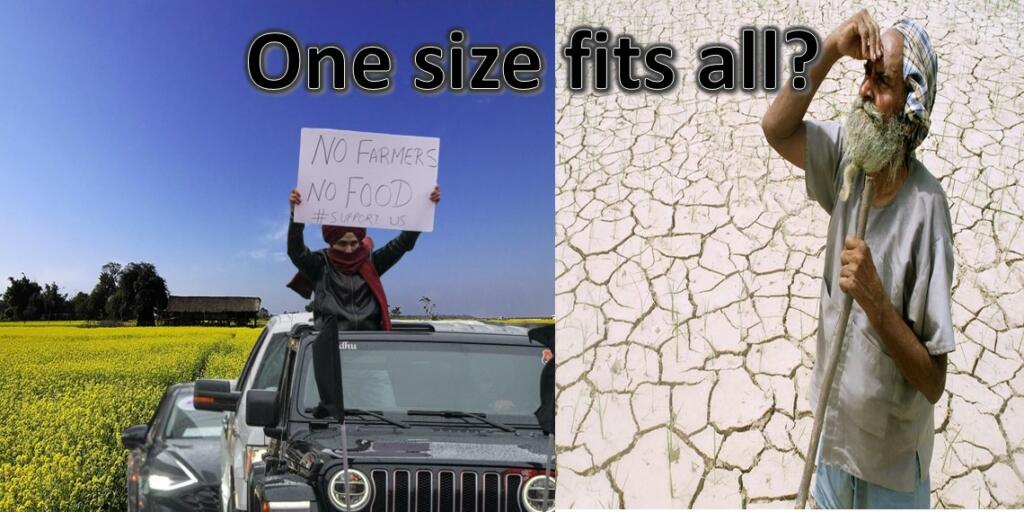In the last few decades, many governments thought of taxing agricultural income because many farmers with income much higher than professional employees do not pay taxes. Now the parliamentary panels, which have members from all parties, are also asking for greater scrutiny of agricultural income given the fact the number of exemptions is moving up exponentially. Parliament’s Public Accounts Committee has flagged that more than 21 lakh taxpayers in their returns for the assessment year (AY) 2020-21 claimed agricultural income and of these, nearly 60,000 reported agricultural income exceeding ₹10 lakh. Giving blanket exemptions on agricultural income means the Union government loses thousands of crore rupees in revenue.
The Modi government must not only consider tighter scrutiny but also impose income tax on agricultural income. For the professionals, income above 5 lakh rupees is taxable while the rich farmers are earning above 10 lakh rupees get a full rebate on taxes paid.
Almost five decades after the Green revolution, which increased the farmer’s income manifold, the government has still put the agricultural income in the tax-exempt category under Section 10(1) of the Income Tax Act, 1961. The agricultural income is tax-exempt with any limit, which means even an individual is earning in crores through agriculture; she/he is not liable to any taxes.
This has left a big black hole in our tax net. The non-salaries class, the majority of who earn through business/work in the unorganized sector, shows the income as agricultural income even if it is not, given the benefits of tax exemption.
The inability to impose a tax on agriculture has led to massive inequities in the collection of direct taxes. The states which are dependent on agriculture contribute a negligible sum in overall tax collection because agricultural income is outside the tax net.
Even the rich states like Punjab and Haryana, which have one of the highest per capita incomes in the country, contribute very little to the net direct tax collection.
As per the latest data from the Income Tax (IT) department, the state of Uttar Pradesh with 16.50 per cent of the country’s population contributes only 4 per cent of the total IT collection. Maharashtra with 9.28 per cent of the population contributes 39.9 per cent of total IT collection.
The income tax share of other states with large populations is at a dismal rate. Bihar constitutes for 8.60 per cent of the total population of India, but it is not even in the top 10 highest income tax paying states.
In many states like Punjab, Haryana, Maharashtra; the farmers are immensely rich. Even if we look at all India scale, there are many rich farmers with many hundred acres of land and, at the same time, there are lakhs of poor farmers in every state. Therefore, while subsidies to poor farmers are necessary, bringing the rich farmers under the tax net is also required. There are thousands of farmers who have hundreds of acres of land, and whose income runs into crores of rupees; these farmers must be taxed for the welfare of poor farmers.
Given the kind of political capital it requires, only the Modi government can be entrusted with such provisions. The Modi government was elected with an even larger majority in 2019, despite steps like demonetization, GST, and IBC, which require massive political capital. Therefore, if the Modi government can go for such bold reforms in the previous term and get re-elected with an even larger majority; it can also afford path-breaking steps like taxing agricultural income. And given the fact the number of people claiming exemption by showing agricultural income is rising consistently, it must consider this step.
